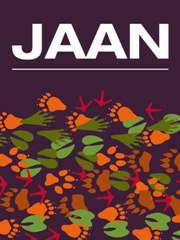Article contents
Influence of the method of whole wheat inclusion on performance and caecal microbiota profile of broiler chickens
Published online by Cambridge University Press: 29 May 2019
Summary
A study was conducted to investigate the effect of method of whole wheat inclusion on performance and caecal microbiota profile of broiler chickens. Fluorescence in situ hybridisation analysis was used to characterise the microbiota by using genus-specific probes. Three treatments, namely, ground wheat (GW) or 200 g/kg whole wheat (WW) replacing GW before or after pelleting were evaluated. A total of 144, one-day-old male broilers (Ross 308) were allocated to 18 cages (eight broilers per cage) based on body weight and six cages were randomly assigned to each treatment. The diets were offered ad libitum from day 11 to 35 post-hatch. The WW fed birds, regardless of the method of inclusion, resulted in poorer weight gain (P < 0.05) and reduced feed intake (P < 0.001), but a similar feed per gain (P > 0.05) compared to those fed the GW diet. The WW diet, regardless to the method of inclusion, had no effect (P > 0.05) on the populations of Lactobacillus and Bacteroides spp. compared with the GW diet. The Bifidobacterium spp. population was higher (P < 0.05) in birds fed the GW diet compared with WW feeding, regardless of the method of inclusion. A reduction (P < 0.05) in the numbers of pathogenic Clostridium and Campylobacter spp. were observed in caecal samples from birds fed WW diets, regardless of method of inclusion, compared with those fed the GW diet, which was attributed to increased gizzard activity. Birds fed WW diets, regardless to the method of inclusion, showed a reduction in gizzard pH (P < 0.05), microbial gas production (P < 0.05), and an increase in gizzard weight (P < 0.05) relative to the GW treatment. The results indicated that the gizzard has an important function as a barrier organ, one that prevents pathogenic bacteria from entering the distal digestive tract.
Keywords
Information
- Type
- Original Research
- Information
- Copyright
- Copyright © Cambridge University Press and Journal of Applied Animal Nutrition Ltd. 2019
Footnotes
Present address: Department of Livestock Production and Management, College of Veterinary Science, Gurur Angad Dev Veterinary and Animal Science University (GADVASU), Ludhiana, Punjab, India 141004
Present address: University of Diyala, Baqubah, Iraq
References
- 7
- Cited by

